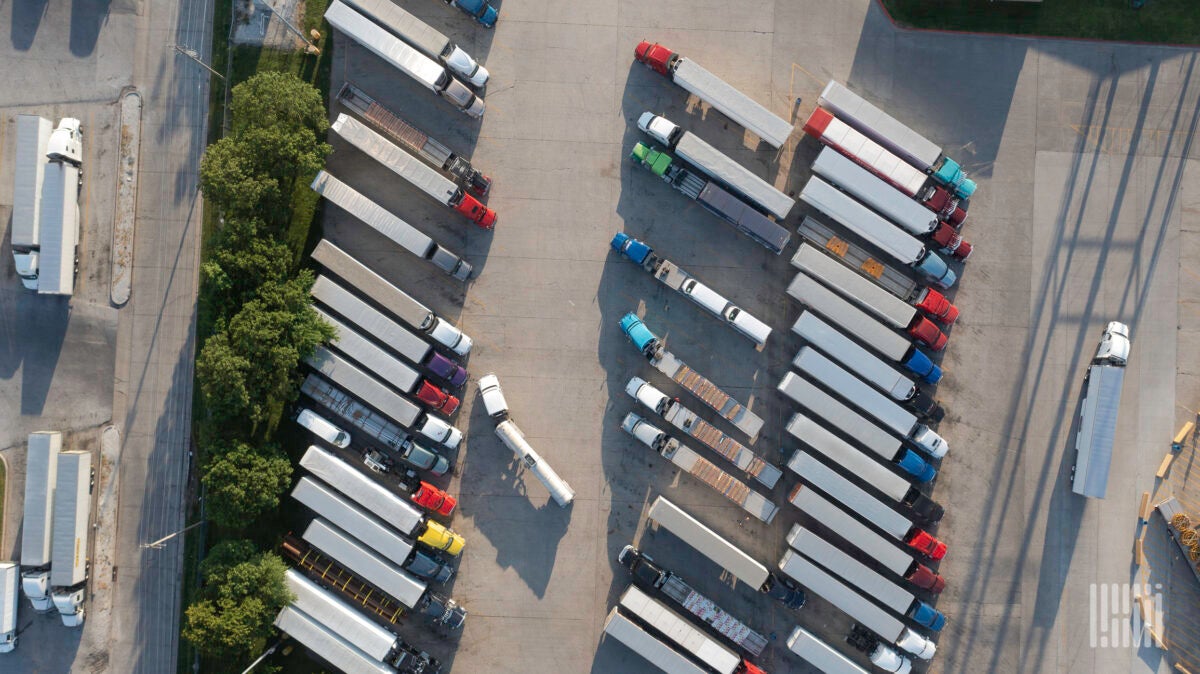A FreightWaves analysis of the monthly Personal Income and Outlays report from the U.S. Bureau of Economic Analysis (BEA) indicates that extraordinary federal government programs boosted personal income by an estimated $2.3 trillion from March 2020 to December 2022. The BEA identifies these as “federal pandemic response programs.”
It’s worth examining the timing of the support. Of the $2.3 trillion of explicitly listed support, 31% came through April to July 2020 and another 33% came through January to April 2021. In other words, nearly two-thirds covered just an eight-month span — mainly from the Coronavirus Aid, Relief and Economic Security (CARES) Act and Paycheck Protection Program (PPP) in March/April 2020 and the American Rescue Plan Act of 2021.
Expectedly, that led to a historic uptick in freight volumes and rates.
When we assess trucking volumes over the last three years, we find volumes surged in the immediate aftermath of CARES and PPP in early 2020. They remained unusually elevated throughout most of 2021, aided by subsequent stimulus programs, but have fallen ever since as the effects of the stimulus programs have worn off. The same trend is evident in truckload spot rates, which have dropped back to where they were in June 2020.
The federal government issued stimulus checks to large chunks of the U.S. population in three rounds: March 2020; December 2020; and March 2021. In September 2021, an estimated 7.5 million Americans stopped receiving enhanced federal unemployment benefits. By October 2021, the government lifted its ban on evictions across the country.
The end of these stimulus programs have coincided with a downturn in the trucking market. FreightWaves’ Outbound Tender Volume Index has been in a decline for seven straight months. That softening in freight volumes and rates happened just as the cost of running a trucking company has sharply increased, thanks particularly to a massive uptick in fuel costs.
Consumer interest in durable goods, which reached a frenzy in the latter half of 2020 and through ’21, has certainly waned. Lightweight parcel volumes in the U.S. were still 20% higher in 2022 in ’19, according to a recent report from DHL eCommerce Solutions. However, elsewhere in the goods economy, cardboard box demand sharply declined in 2022 — particularly during the last quarter of that year.
How we came up with $2.3 trillion
The pandemic government support estimation of $2.3 trillion is based on a series of funding categories listed in the “Effects of Selected Federal Pandemic Response Programs on Personal Income, 2022 Annual Update” and subsequent monthly releases through the end of ’22 published by the BEA. It includes student loan forbearance but excludes mortgage loan forbearance.
Other COVID-related programs boosted personal income but are not listed in the BEA’s pandemic effects tables, such as enhanced food stamp benefits.
In other words, the $2.3 trillion figure, while quite large by any measure, understates the contribution to personal income over the past three years given the exclusion of mortgage loan forbearance, extra food stamp benefits and so on.
FreightWaves aimed to compare the cumulative impact of extraordinary government support to the cumulative change in personal income over the past three years. But our team would be comparing a “flow” number (federal pandemic response programs that boosted personal income each month) to a “stock” number (personal income).
Certain COVID-era stimulus packages remain — and their end could cut down trucking volumes even more
Pending ongoing litigation, a yearslong pause on repayment of federal student loans may soon be lifted, which would impact some 40 million Americans with this type of debt. Some 25% of these loans were in delinquency or default before the pandemic.
Certain federal benefits for low-income Americans, like enhanced food stamps and increased Medicaid enrollments, are set to end in the coming months as well. Lisa Hamler-Fugitt, executive director of the Ohio Association of Foodbanks, told the Washington Post in March that the planned reduction in these benefits will slash an estimated $120 million from the state’s retail economy.
These rollbacks, while inevitable, could further slam a trucking market that’s scrambling for volume.
If you’d like to get in touch with FreightWaves senior vertical expert Adam Josephson, please email him at [email protected] or [email protected].












Carlos 🇺🇸🇺🇸
⚠️ isn’t it incredible how the Democrats can take a bonfire, wicked hot economy and turn it into a total disaster with banks crashing that are taking global banks along with it 🔥🔥🔥🔥🔥
John
Someone has been reading my comments. Only been saying this for the last year.